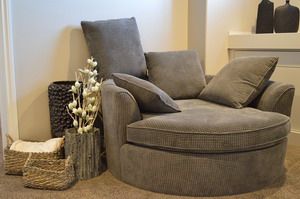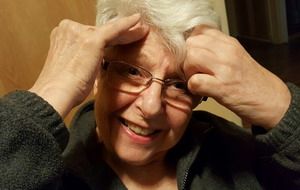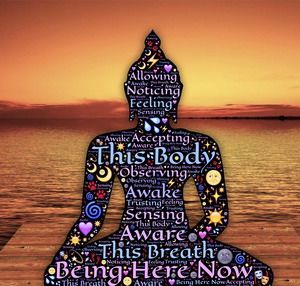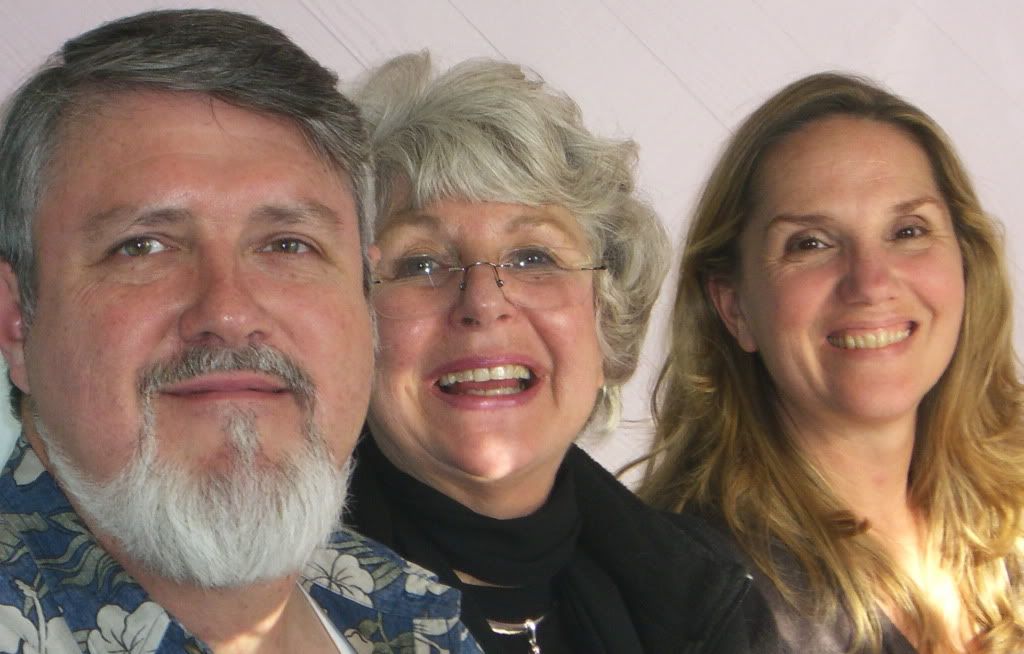| Welcome |
|
May 8, 2016
Relaxation
Hi ,
 America today has a handle on physical relaxation. We have our favorite Lazy Boy easy recliner with attached drink caddy that keeps the cold ones at our finger tips, as well as the four entertainment center remotes and the TV Guide. A few of us have even splurged on the $6000 Super
Relaxomatic Shiatsu Massage chair with both the leg massagers and the hand massagers. So relaxation in the form of complete loss of the need for muscle motor function has been achieved. I guess the final step will be home versions of iron lungs so we don’t even need to breath on our own.
With such a technical mastery of the skills of physical relaxation, why are Americans so stressed out? Why have stressed caused diseases become so common? Why are the majority of Americans using some sort of mood altering medications or substances every day?
 The answer to this question that I am going to give you is something you probably have never heard of or thought about – brain lateralization. What the heck is that? Shouldn’t I be focusing on core values, spiritual principles, heart connection, or at least meditation exercises? The answer to this question that I am going to give you is something you probably have never heard of or thought about – brain lateralization. What the heck is that? Shouldn’t I be focusing on core values, spiritual principles, heart connection, or at least meditation exercises?
Yes, these are all valuable paths to greater mental and emotional relaxation, but do you understand why? I believe that with understanding you can creatively adapt to find ease in any life situation. When all you have is specific exercises and concepts to focus on, you become somewhat frustrated because you tell yourself you know what you need to do, but you just don’t have the time to do it right now. You accept being stressed out now and tell yourself you will
do some yoga, or meditate, or read from spiritual works when you have time later tonight.
 What if there was a way of understanding your brain that allowed you to move into relaxation any time without loosing your action momentum? What if this understanding could even improve your efficiency and effectiveness in your work and personal life, while simultaneously improving your mental and emotional health? Sound
interesting? What if there was a way of understanding your brain that allowed you to move into relaxation any time without loosing your action momentum? What if this understanding could even improve your efficiency and effectiveness in your work and personal life, while simultaneously improving your mental and emotional health? Sound
interesting?
Here is the concept in a nutshell. There are lots of parts to our brain. The most obvious distinction is the separation between the right brain and the left brain. For simplicity I will write about lateralization between these two halves of the brain, but understand that integration of all the different parts of the brain is what we are seeking.
 Different areas of the brain do different things. For example when we look at something with our eyes, the visual image is broken up into lots of aspects and processed in different areas of the brain. One part of the brain sees the edges of things, another sees color, another sees relative light value differences, several other parts
reassemble these parts and compares the compilation to memory for recognition of what we are looking at. Still other parts of the brain add in our historical relationship to the interpreted image and any emotional reactions are mixed in. This is all shuttled to the action assessment part of the brain to see if we want or need to react to the image in some way. If so, then this information has to be sent to the motor cortex to initiate muscle action, and so on… Different areas of the brain do different things. For example when we look at something with our eyes, the visual image is broken up into lots of aspects and processed in different areas of the brain. One part of the brain sees the edges of things, another sees color, another sees relative light value differences, several other parts
reassemble these parts and compares the compilation to memory for recognition of what we are looking at. Still other parts of the brain add in our historical relationship to the interpreted image and any emotional reactions are mixed in. This is all shuttled to the action assessment part of the brain to see if we want or need to react to the image in some way. If so, then this information has to be sent to the motor cortex to initiate muscle action, and so on…
The brain is complex. What would happen if parts of this whole process were shut down? How would you see if you could not process the edges of things? What do you do if you don’t have the ability to recognize things? As you can imagine, if any part of this complexly integrated process is inhibited, we will encounter major stress. We will not be happy.

Neurology has studied people with brain injuries to specific areas that produce exactly these kinds of problems. It is very challenging for folks with brain injuries to cope with life.
Most of us spend much of our day with a major brain dysfunction caused by brain lateralization. I believe this problem is the most common cause, the actual origin of our stress. Our cognitive processing occurs primarily in the front of our brain. The two halves process very differently. Typically the left side processes focused logical thinking, mathematics, and threat assessment, while the right half processes global integration, artistic appreciation, and
feeling relationships.

Depending on the situation we are in, most of us will use one side of our brain primarily to process life and how we relate to it. How frequently we choose the same side forms our personality. If we want to balance our checkbook we use our left brain. If we want to connect in a loving way with our loved one, we will tend to shift into right brain processing. This makes sense to us because we are accustomed to things working this way. Some people almost
always stay in their left brain to relate to the world, while others prefer to stay in their right brain all the time. Everyone is different as to when they choose to use one side or the other. Using just one side is brain lateralization.
Here is the big picture I want to share. We are designed to use our whole brain all the time. Any time we don’t use our whole brain we get stressed. We have gotten used to the feeling of working from only one side of our brain at a time and so generally don’t recognize the stress involved, but it is there. Where we do feel the  stress is when we encounter a life challenge that our chosen brain half does not know how to relate to. Most often that side of the brain is not built to deal with these types of challenges, while the unused side deals with them easily. But if we are lateralized, we can’t access the processing skills of our unused side. Because we don’t know how to deal with life we feel bad and seek out medications and drugs to block the bad
feelings. stress is when we encounter a life challenge that our chosen brain half does not know how to relate to. Most often that side of the brain is not built to deal with these types of challenges, while the unused side deals with them easily. But if we are lateralized, we can’t access the processing skills of our unused side. Because we don’t know how to deal with life we feel bad and seek out medications and drugs to block the bad
feelings.
If however we allowed ourselves full access to both sides of our brain, most challenges would be met with ease and grace. Sometimes we have to make leaps in maturation to meet a challenge, but even these leaps are much easier when we have a whole brain to work with.
But sadly, we train ourselves from very early ages to ignore one half of our brain and preferentially use the other half. This may be because we want to please a parent by being like them, or the nature of our life challenges may force us to use one side most of the time to cope with the demands on us. Culturally there is simply no support for whole brain thinking. If you are raised in a culture of artists, they will vilify left-brain thinking, while a culture of
hard-core realists will negate airy-fairy thinking from the right brain.
So how do we start to build whole brain thinking? The first step is to value whole brain thinking. Challenge yourself to see the value of the thinking processes of people who are very different from you. See life through other people’s eyes. Feel life differently. This will start to exercise your non-dominant brain hemisphere. If you are the artistic sort, find ways to see the mathematical geometries in structures you appreciate. If you
are a left brain dominate, work on feeling appreciation for different flavors of foods.

There is a natural cycle of brain processing. Every 20 minutes your brain wants to shift sides in processing. This is paralleled by a shift in which nostril you will dominantly breath through – right nostril for left-brain and left nostril for right brain. I believe this has to do with using the sinuses to cool the blood flow to each hemisphere differently based on activity. We can use this physiological nostril breathing effect on the brain to
train/exercise our ability to use both hemispheres. Alternate nostril breathing is a yogic technique used for thousands of years for this exact purpose. Simply find a relaxed posture and use your finger along side the nostril to block airflow as needed. Breathe in through the right nostril slowly then exhale slowly through the left nostril, then inhale through the left nostril and exhale through the right. Repeat this process for several minutes. There, you have
trained your brain to do a bit of whole brain functioning.
 Another simple technique I show patients in the office is to lightly touch and hold the area of the forehead above both eyes simultaneously with the first two fingers of each hand. These reflex points open up the blood flow in the midbrain area to help us process anxiety and decrease stress. As we do this the communication between
the right and left hemispheres begins to open up and balance. Another simple technique I show patients in the office is to lightly touch and hold the area of the forehead above both eyes simultaneously with the first two fingers of each hand. These reflex points open up the blood flow in the midbrain area to help us process anxiety and decrease stress. As we do this the communication between
the right and left hemispheres begins to open up and balance.
Whole brain functioning looks more like processing is alternating between each side fairly quickly – maybe 30 seconds each side back and forth. But in reality, once you have the skill fully in place, both sides are processing simultaneously. It is only your focus of attention that is shifting back and forth. It’s looking at everything from many different angles at a time.

I am just lightly touching on a very deep subject here, but the core idea is that the actual origin of most of our stress is that we have not allowed ourselves to use our full brain capacities to deal with life. Without full brain functioning we are not able to chart solutions in our life that meet the needs of both our heart and our head. The resulting failures to resolve these challenges in our life replay over and over as the stories of stress we live day by day.
There is a better way.
Take care,
David
Ellen update:
 Sometimes just being around gets you the opportunity to work out muscles you didn't think you could. Ellen just had that opportunity when I decided I needed to show folks where on the forehead to hold to open up blood flow to the midbrain. Getting her left arm up high enough to
hold the point without slipping down into her eye was a real challenge. Fortunately we love challenges...right? Sometimes just being around gets you the opportunity to work out muscles you didn't think you could. Ellen just had that opportunity when I decided I needed to show folks where on the forehead to hold to open up blood flow to the midbrain. Getting her left arm up high enough to
hold the point without slipping down into her eye was a real challenge. Fortunately we love challenges...right?
---------------------------------------------------------
Hayfever? Allergies? New relief!
We got in a new product two weeks ago that I have had several patients try out for helping with allergy symptoms. Their response has been a resounding "yes, this helps!" It acts like an antihistamine without any of the drowsy side effects of the usual meds. It
is a nutrient and herb base that really works - Histo-X. had several patients try out for helping with allergy symptoms. Their response has been a resounding "yes, this helps!" It acts like an antihistamine without any of the drowsy side effects of the usual meds. It
is a nutrient and herb base that really works - Histo-X.
|
| H |
| On the Wire |
|
Battle Field Acupuncture Quietly alternative medicine is making its way into the mainstream. You know progress has been made when the military starts incorporating it into real world battlefield clinics. The military has integrated the use of auricular (ear) acupuncture to treat pain in soldiers injured in combat. This makes sense since the military has such a huge problem with soldiers becoming addicted to pain pills.
Quietly alternative medicine is making its way into the mainstream. You know progress has been made when the military starts incorporating it into real world battlefield clinics. The military has integrated the use of auricular (ear) acupuncture to treat pain in soldiers injured in combat. This makes sense since the military has such a huge problem with soldiers becoming addicted to pain pills.
Acupuncture
_____________________________________________
"Creativity is allowing yourself to make mistakes. Art is knowing which ones to keep"
~ Scott Adams
__________________________________
Resting between weight lifting sets better Using actual muscle biopsies researchers showed that lifters get twice as much muscle growth by waiting five minutes between sets of lifting compared to only waiting one minute. Other research has demonstrated that when exercised to failure, muscles need anywhere from 4 to 14 days to recover and have time to build more muscle. When you tear down muscles, they need time to heal and adapt with more muscle
development.
Rest
______________________________________________
Using actual muscle biopsies researchers showed that lifters get twice as much muscle growth by waiting five minutes between sets of lifting compared to only waiting one minute. Other research has demonstrated that when exercised to failure, muscles need anywhere from 4 to 14 days to recover and have time to build more muscle. When you tear down muscles, they need time to heal and adapt with more muscle
development.
Rest
______________________________________________
"I'm most proud of the blessings that God has bestowed upon me, in my life. He's given me the vision to truly see that you can fall down, but you can still get back up. Hopefully I'll learn from my mistakes and have the opportunity to strengthen and improve the next thing I
do."
~ Martin Lawrence
_______________________________
Too much muscle? The BMI measure of weight compared to height has long been criticized for not differentiating between weight from fat and weight from muscle. A trim heavily muscled man can have a higher BMI than a weak fat person, so who is more likely to die from a heart attack? The totally surprising answer is the trim heavily muscled man with the higher BMI. Following 60,000 people for 15 years and measuring fat levels compared to
muscle levels showed to everyone’s surprise that it didn’t matter whether the weight was fat or muscle. The heaver you are for your height for any reason, the more likely you are to die of cardiovascular disease.
The BMI measure of weight compared to height has long been criticized for not differentiating between weight from fat and weight from muscle. A trim heavily muscled man can have a higher BMI than a weak fat person, so who is more likely to die from a heart attack? The totally surprising answer is the trim heavily muscled man with the higher BMI. Following 60,000 people for 15 years and measuring fat levels compared to
muscle levels showed to everyone’s surprise that it didn’t matter whether the weight was fat or muscle. The heaver you are for your height for any reason, the more likely you are to die of cardiovascular disease.
Muscle
_______________________
"Take chances, make mistakes. That's how you grow. Pain nourishes your courage. You have to fail in order to practice being brave."
~ Mary Tyler Moore
________________________________________________
Our address is 9725 Fair Oaks Blvd.
Our hours are M - F 9 to 1 and M, Tu, & Th 3 to 6
Finding the new location is very easy. Coming from highway 50 up Sunrise Blvd, you turn left and go up a block. We are on the right hand side - the building just past the Subway Sandwich shop. If you are coming down Sunrise from the Mall area then just turn right on Fair Oaks Blvd and up a block on the right.
If you are coming from the Roseville area you could come down Sunrise Blvd, but that is a long trek. It is probably shorter time wise to come down Auburn Blvd - San Juan Ave like you have been for the Sunset office, but instead of turning left at Sunset, keep going straight 3 more lights to Fair Oaks Blvd and turn left. Go down 2 lights to New York Ave, go through the intersection, and immediately turn into the turn lane once the center
divider ends. We are on the left.
You are free to reprint this article in your newsletter as long as you include the following statement in the same size type and color:
"This article appears courtesy of Fair Oaks Health News, offering natural and healthy solutions for body, mind and soul. For a complimentary subscription,
visit http://www.fairoakshealth.com"
|
| |
|
|
|
_______________
to check on old newsletters
_______________
About Dr. DeLapp
|
Dr. DeLapp has been a philosopher, non-force Chiropractor, medical intuitive, and health innovator for over 30 years. He began experimenting with medical intuition in 1972 while studying physics at UC Davis. In addition to physics he designed and completed an individual major in the philosophy and psychology of education. Shortly after he choose to pursue a career in the only
truly health oriented profession available at that time, Chiropractic. He graduated with honors in 1981 with his doctorate and opened a private practice.
Since that time he has continued his research into the effects of consciousness and learning on health.
He developed the Biomagnetic Retraining system for correcting movement abnormalities.
Since 1991 he has focused on developing a powerful system for uncovering and assisting the mind-body connection in health and personal growth. The in-depth coaching, guided by the subconscious direction from the body, is called Heartflow and the simpler mind-body retraining for health and unfoldment he has named Gracework. Both are available at Fair Oaks Health.
Fair Oaks Healing
& Arts Center
Staff
 Dr David DeLapp DC
Dr David DeLapp DC
Chiropractor
Ellen Flowers FGM
Spiritual Life CoachEnergetic Nutritionist
Health Care Coordinator
Susan Richardson
Office Manager
Front Desk
Sherry Herrera
Front Desk Person
Susan McDonald
Catherine Cummings
Is there a sweet that is not poisonous? Yes!
 Dr Dave Supersweet Drops and 2X Sugar Substitute
Dr Dave Supersweet Drops and 2X Sugar Substitute
New Products
Flax Lignans

Root Beer
 Safe Antiperspirant
Safe Antiperspirant

|
|

